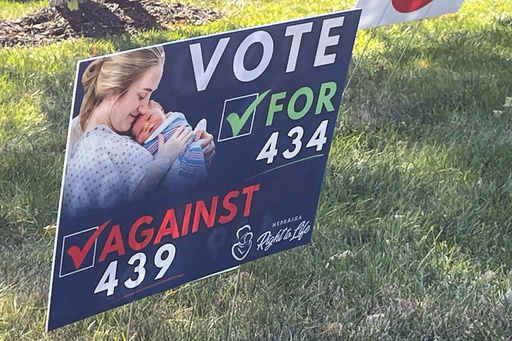Voters in Nebraska and Arizona are set to confront conflicting ballot measures in the upcoming November elections—one regarding abortion rights and the other focused on primary elections. If all proposed measures pass, subsequent judicial review may determine their outcomes and enforceability.
Both Arizona and Nebraska share a constitutional clause that stipulates when multiple conflicting measures are approved on the same ballot, the one with the highest number of affirmative votes takes precedence. While this seems straightforward, complexities arise due to the distinct focus of each measure and the potential for legal challenges based on conflicting sections within the proposals.
Legal expert Michael Gilbert, from the University of Virginia School of Law, emphasizes that conflicting ballot measures occur more often than one might expect, particularly given the complexities inherent in the prevailing vote rule. His interest in such legal quandaries was sparked by competing measures in California two decades ago.
In Nebraska, following the U.S. Supreme Court’s resolution to eliminate a nationwide right to abortion, the state instituted a law last year prohibiting abortions after 12 weeks, except under specific circumstances such as medical emergencies or instances of sexual assault. Advocates for abortion rights have gathered enough signatures to propose a constitutional amendment establishing “a fundamental right to abortion until fetal viability,” which is typically after 20 weeks, while also allowing exceptions to safeguard the life or health of the mother. Meanwhile, abortion opponents are pushing for their own measure that aims to solidify the current law into the constitution, effectively banning abortions in the second and third trimesters, with exceptions mirroring those in the existing law.
In Nebraska, the Constitution states that the measure with the highest vote count shall prevail regarding any conflicting provisions. Consequently, if the abortion-rights amendment receives the most votes, it could wholly invalidate the restrictive measure. However, if the latter prevails, courts could interpret its conflict with the abortion-rights measure as some constraints only manifesting during the second and third trimesters, thereby allowing for abortion access as a fundamental right in the first trimester.
Turning to Arizona, the situation also revolves around primary election methods. The state’s Republican-led Legislature has proposed an amendment aiming to solidify partisan primaries in the state constitution, which confirms each party’s ability to present a candidate for each office in general elections. In contrast, a citizen-backed initiative seeks to transform the current process by establishing open primaries where candidates from all parties appear on the same ballot, allowing multiple candidates to advance to the general election. If more than three candidates qualify, the initiative stipulates the use of ranked choice voting to select the winner in the general election.
The Arizona Constitution also mandates that the measure receiving the most votes prevails concerning any conflicting issues. Historically, the Arizona Supreme Court has utilized this provision to harmonize conflicting measures, as demonstrated in a 1992 case regarding the state mine inspector where both competing amendments were reconciled to allow for combined terms.
Looking at broader trends, research by Gilbert and a peer at UC Berkeley examining competing proposals revealed that winning measures often make minimal changes from existing laws. Nonetheless, there are instances where the highest-vote rule is irrelevant, either due to one measure’s approval and the other’s rejection or both being defeated. For example, in California’s 2022 election cycle, two rival measures to legalize sports betting were overwhelmingly rejected despite substantial financial backing. In 2018, Missouri voters approved one of three competing proposals regarding medical marijuana legalization, with the other two failing.
The presence of conflicting ballot measures is not uncommon, according to John Matsusaka from the Initiative and Referendum Institute. The general trend among voters is to recognize the nuances and typically support one measure while voting against the other.


